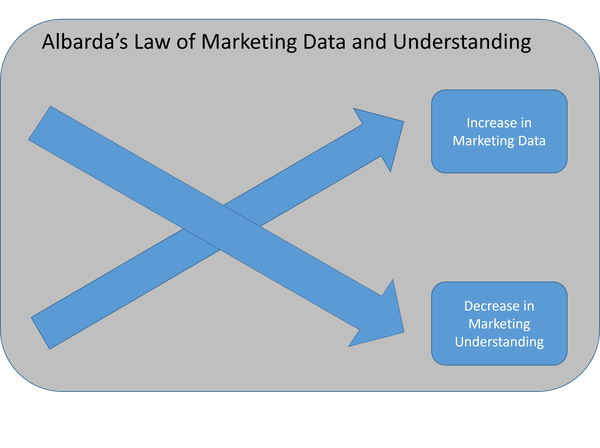In 2013, I wrote a book with Joseph Jaffe called “Zero (Paid Media).” It was a fascinating exercise, and apparently so daunting that I never wrote a book ever again. That is probably a
good thing, as Dave Morgan shared yesterday that 52% of Americans hadn't read a book in a year.
In the book, I launched the Albarda Law of Marketing Data and Understanding. It says that with
each increase in data, a marketer’s confusion and understanding of it decreases with an equal amount. I believe that, sadly, the law still stands today.

We have access to more data than any generation of marketers in history. Dashboards light
up with real-time analytics, user journeys are mapped to the millisecond, and we can track customers from their first click to their tenth purchase in real time. And this week saw the launch of the
first-ever agentic media buy.
advertisement
advertisement
Yet, despite being surrounded by alleged answers, we feel more uncertain than ever. We're drowning in data, but deprived of wisdom. This is a systemic problem. We
got so good at collecting information that we forgot how to connect it to what truly matters.
The constant, and at times incredibly awesome, growth of the digital marketplace has created this
unintended side effect. It trained an entire generation of marketers to obsess over technical, diagnostic metrics. We started managing the weeds, focusing on the delivery of the ad rather than its
actual impact on consumers. We were winning the battle on viewability, but often losing the war for our customers' hearts and minds.
So, how do we stop data overload and start connecting
dots?
Well, let’s start with asking questions rather than staring at data diarrhea. The biggest mistake marketers make is opening a dashboard and asking, "So, what does this tell me?"
This is a recipe for getting lost in vanity metrics and random correlations. This gets you to celebrate your “Likes” or “Engagement” while your business is tanking.
So
here is a novel and radical idea: Never look at data without first having a specific business question in mind.
Once you have a clear question, you can use the data purposefully. The question
becomes your filter, allowing you to ignore the noise and focus on finding a real answer.
And secondly, separate "signal" from "noise.” Not all metrics are created equal. You’ll
need to differentiate between the vital and the whatever.
Signals are the core metrics directly tied to your business objectives. Think customer lifetime value, brand consideration, revenue
per user, or qualified leads. You really should not have more than three to five of these.
Noise are diagnostic or vanity metrics. Things like impressions, clicks, view-through rates, or
social media likes fall into this category. They can be useful to track your investment, but they should never be the end goal.
The real purpose of data isn't to just generate a cute
dashboard, no matter how real-time it is, but to uncover insight. I’ve written about ad icon John Hegarty before. He once shared: “Data is the flashlight you use in a dark room to find the
one thing you're looking for: a simple, powerful human truth.” Data is the tool to find something. And unless you are in the flashlight business, the tool is not the end product.